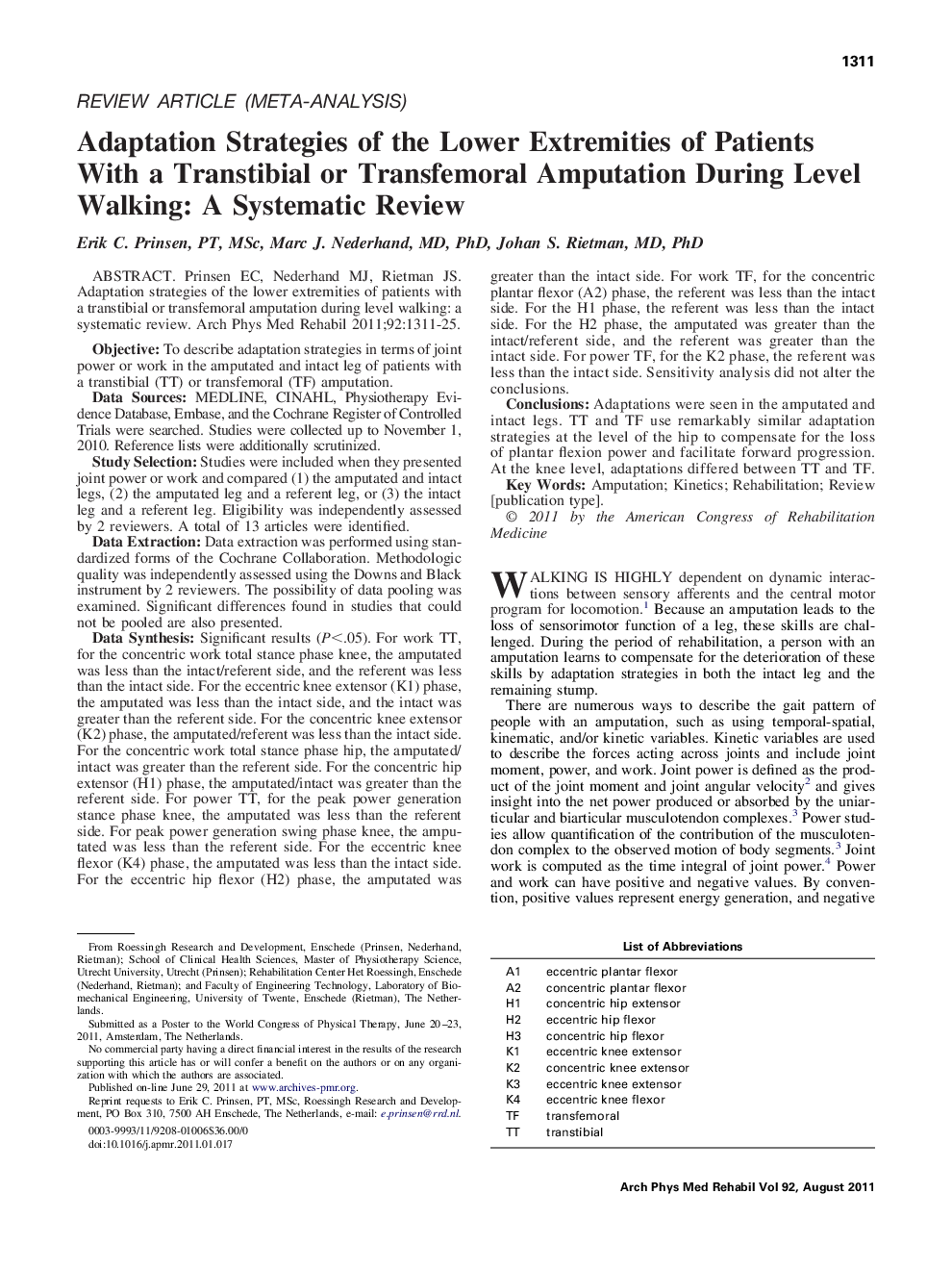| Article ID | Journal | Published Year | Pages | File Type |
|---|---|---|---|---|
| 3449089 | Archives of Physical Medicine and Rehabilitation | 2011 | 15 Pages |
Prinsen EC, Nederhand MJ, Rietman JS. Adaptation strategies of the lower extremities of patients with a transtibial or transfemoral amputation during level walking: a systematic review.ObjectiveTo describe adaptation strategies in terms of joint power or work in the amputated and intact leg of patients with a transtibial (TT) or transfemoral (TF) amputation.Data SourcesMEDLINE, CINAHL, Physiotherapy Evidence Database, Embase, and the Cochrane Register of Controlled Trials were searched. Studies were collected up to November 1, 2010. Reference lists were additionally scrutinized.Study SelectionStudies were included when they presented joint power or work and compared (1) the amputated and intact legs, (2) the amputated leg and a referent leg, or (3) the intact leg and a referent leg. Eligibility was independently assessed by 2 reviewers. A total of 13 articles were identified.Data ExtractionData extraction was performed using standardized forms of the Cochrane Collaboration. Methodologic quality was independently assessed using the Downs and Black instrument by 2 reviewers. The possibility of data pooling was examined. Significant differences found in studies that could not be pooled are also presented.Data SynthesisSignificant results (P<.05). For work TT, for the concentric work total stance phase knee, the amputated was less than the intact/referent side, and the referent was less than the intact side. For the eccentric knee extensor (K1) phase, the amputated was less than the intact side, and the intact was greater than the referent side. For the concentric knee extensor (K2) phase, the amputated/referent was less than the intact side. For the concentric work total stance phase hip, the amputated/intact was greater than the referent side. For the concentric hip extensor (H1) phase, the amputated/intact was greater than the referent side. For power TT, for the peak power generation stance phase knee, the amputated was less than the referent side. For peak power generation swing phase knee, the amputated was less than the referent side. For the eccentric knee flexor (K4) phase, the amputated was less than the intact side. For the eccentric hip flexor (H2) phase, the amputated was greater than the intact side. For work TF, for the concentric plantar flexor (A2) phase, the referent was less than the intact side. For the H1 phase, the referent was less than the intact side. For the H2 phase, the amputated was greater than the intact/referent side, and the referent was greater than the intact side. For power TF, for the K2 phase, the referent was less than the intact side. Sensitivity analysis did not alter the conclusions.ConclusionsAdaptations were seen in the amputated and intact legs. TT and TF use remarkably similar adaptation strategies at the level of the hip to compensate for the loss of plantar flexion power and facilitate forward progression. At the knee level, adaptations differed between TT and TF.
